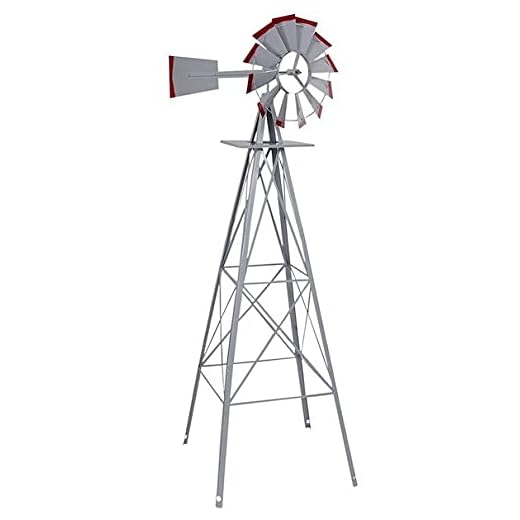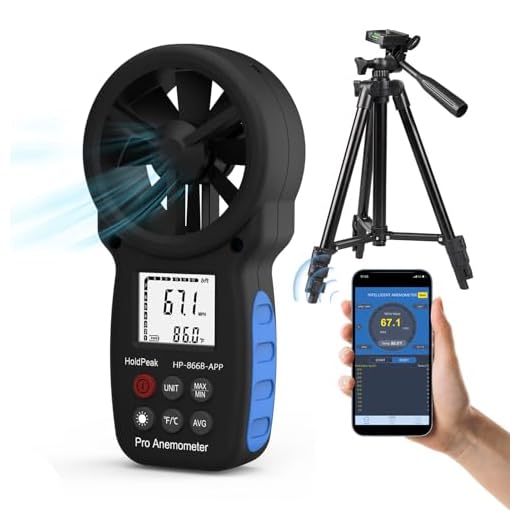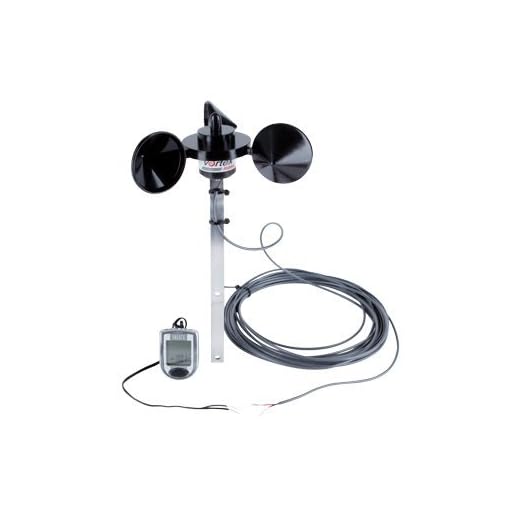Understanding wind power is essential for many reasons, from predicting a terrible storm to seeing how much energy can be produced.
But before we can do that, we need to know how wind is measured. This article will cover anemometers and wind vanes—the two primary tools used to measure the strength and direction of winds.
Have you ever gone outside on a windy day and had your hair whipped around? Or stood in awe as a kite flew high above you? These are examples of people experiencing the power of wind firsthand. But what if there was a way to measure this force accurately? Thankfully, there are tools available that allow us to do just that!
So, let’s get started – buckle up because it’s about to get breezy! Anemometers and wind vans are essential instruments for measuring the speed and direction of winds. This article discusses how these tools work, their history, and why they’re crucial for understanding our environment today.
Measuring wind is crucial for several fields, from aviation to renewable energy. Wind can be measured using various instruments, including anemometers, wind vans, cup anemometers, and weather stations.
In this article, we will explore how these instruments work and their accuracy in measuring different aspects of wind.
Review contents
What is an Anemometer, and How Does it Measure Wind Speed?
An anemometer is a device that measures wind speed. It is one of the most commonly used instruments to measure wind.
An anemometer typically consists of three or four cups attached to arms mounted on a vertical spindle.
As the wind blows, the cups rotate, and the rotation speed is measured to determine the wind speed.
What are the Different Types of Anemometers?
There are various types of anemometers, including:
- Cup Anemometers: As mentioned earlier, cup anemometers have three or four cups that rotate with wind speed, which is then translated into a velocity measurement.
- Sonic Anemometers: These measure wind speed using high-frequency sound waves that travel through the air.
- Vane Anemometers can measure wind speed and direction by measuring the force and direction in which the wind is blowing.
- Hot Wire Anemometers: These heat a wire within the air stream and measure the cooling rate as an indication of the airflow rate.
How Accurate are Anemometers?
Anemometers are generally entirely accurate in measuring wind speeds. However, barometric pressure and air density must be considered when calibrating the instrument.
This is why most anemometers should be calibrated periodically to ensure accurate readings.
What Factors Affect Wind Speed Measurements Using Anemometers?
Airflow disturbance is the most significant factor in measuring wind speed using an anemometer. Flow disturbances may come from the surrounding environment or the measuring instrument itself.
These disturbances can often result in a distorted measurement. The number of cups also plays a role in the measurement.
Wind blowing in different directions may produce inaccurate readings, so it is essential to have a cup anemometer responsive to the sum of the wind velocities to account for the circular motion produced by the cups.
What is Wind Direction, and How is it Measured?
Wind direction is defined as the direction from which the wind is blowing. It is often measured by a device called a wind vane.
What is a Wind Vane, and How Does it Work?
A wind vane is a device that measures the direction of the wind. It comprises a flat sheet or blade attached to the top of a vertical rod. The rod is mounted perpendicular to the ground and can rotate freely on a horizontal axis. As the wind blows, the flat blade aligns itself with the direction of the wind, indicating wind direction.
How Accurate are Wind Vanes?
Wind vans are generally accurate in measuring wind direction. However, ensuring the vane is mounted correctly and not affected by nearby obstacles or improper calibration is essential.
What are the Different Types of Wind Vanes?
There are two main types of wind vanes:
- Aerovane: This type of wind vane has a cylindrical shape and is arrow-shaped on both ends, meaning it can measure wind speed and direction at the same time.
- Simple Vane: A simple vane is essential for measuring wind direction. It uses a flat plate or arrow pointing toward the wind.
How is Wind Speed Measured Without an Anemometer?
If an anemometer is unavailable, other methods exist to measure wind speed. One of the most common methods is a cup anemometer.
What is a Cup Anemometer?
A cup anemometer is an instrument that measures wind speed, similar to the design of an anemometer.
Instead of measuring the rotations of a tiny blade or cylinder connected to the instrument, a cup anemometer has four half-spherical cups that rotate as the wind blows from different directions. The number and rotations of these cups depend on the wind flow.
What are the Other Methods for Measuring Wind Speed?
- Pitot Tubes: A pitot tube is a device that measures the velocity of fluid flow. It has a small tube that faces directly into the wind. Other instruments that can measure wind speed include: Other instruments that can measure wind speed include:
- Sonic Anemometers: as mentioned previously, Sonic anemometers measure wind speed using high-frequency sound waves.
- Hot Wire Anemometers: This instrument heats a wire within the air stream and measures the cooling rate of the wire that cools the wire, measuring the air flow rate.
What are the Limitations of Using Alternative Methods?
The main limitation of using alternative methods to measure wind speed is their accuracy.
While some instruments may be pretty accurate, others have various sources of error that must be considered. Additionally, some instruments may not be suitable for certain types of wind, causing distorted readings.
What Instrument is Used to Measure Wind?
Weather stations are the main instruments used to measure wind speed along with other meteorological data.
What is a Weather Station, and How Does it Work?
A weather station is a device that measures temperature, air pressure, wind speed, direction, humidity, and other atmospheric variables. Generally, weather stations consist of a thermometer, barometer, hygrometer, anemometer, and wind vane. The instruments within a weather station collect data, which a meteorologist analyzes and uses to study weather patterns.
What Other Meteorological Data Can Be Measured by Weather Stations?
Weather stations can also measure the following:
- Atmospheric Pressure: Pressure measurements can determine weather patterns in detail, effectively aiding in predicting conditions.
- Precipitation: Rainfall and snowfall can be measured in terms of water volume using devices such as a tipping-bucket rain gauge.
- Humidity: Humidity data can help interpret how the evaporative processes work in the atmosphere and are essential in understanding global atmospheric systems.
How Accurate are Weather Stations in Measuring Wind and Other Meteorological Data?
Weather stations are generally highly accurate in measuring wind and other meteorological data. However, like any instrument, a weather station must be situated suitably to reduce accuracy errors. The instrument sensors must be kept in good condition, calibrated periodically, and cleaned to produce optimal readings.
What Units Are Used to Measure Wind Speed?
Wind speeds are usually measured in velocity units related to distance and time.
What is the Meaning of Miles per Hour (mph) in Wind Speed Measurements?
Miles per Hour (mph) is one of the most common units used to express speed in the United States; it equals the distance in miles wind travels within an hour.
What are the Other Units Used to Measure Wind Speed?
Other units used to measure wind speed include meters per second (m/s), kilometers per hour (km/h), feet per minute (ft/min), and knots (nautical miles per Hour).
How can Wind Speed Measurements be Converted from One Unit to Another?
To convert wind speed measurements from one unit to another, use the following formulas:
- m/s to km/h: Multiply the wind speed (in meters per second) by 3.6
- km/h to m/s: Divide the wind speed (in kilometers per Hour) by 3.6
- mph to m/s: Multiply the wind speed (in miles per Hour) by 0.44704
- knots to m/s: Multiply the wind speed (in knots) by 0.514444
FAQ: How is Wind Measured?
Q: What is a wind vane?
A: A wind vane is an instrument used to determine the direction of the wind.
Q: What is a cup anemometer?
A: A cup anemometer is a tool used to measure the speed of the wind. It has three or four cups that spin when the wind pushes against it, which allows it to measure the movement of the air.
Q: What is the Beaufort scale?
A: The Beaufort scale measures wind speed and its effects on land or sea. It ranges from 0 to 12 and is based on the wind’s effect on the environment, such as the speed of objects’ movement and the severity of waves.
Q: How is wind speed measured?
A: Wind speed is measured by an anemometer, which has moving parts that measure the speed of the wind. The maximum 5-minute mean speed and the maximum wind gust are usually recorded.
Q: What is a wind gust?
A: A wind gust is a sudden, brief increase in the wind speed. It is usually measured alongside the mean wind speed.
Q: How is the direction of the wind measured?
A: The direction of the wind is measured using a weather vane, also called a wind vane. Wind vanes are simple tools that measure the direction in which the wind is coming or blowing.
Q: What is the effect of the wind on low-pressure systems?
A: The faster the wind, the lower the air pressure. Therefore, low-pressure systems are usually associated with severe weather and high winds.
Q: What are some standard instruments used to measure the wind?
A: Some standard instruments used to measure the wind include anemometers (both cup and vane types), weather vanes, and windsocks.
Q: How does wind affect wind turbines?
A: Wind turbines rely on air movement to generate electricity. The faster the wind, the more electricity it can generate. However, wind turbines have a maximum wind speed at which they can operate safely without risk of damage.
Q: How can I measure the wind in my area?
A: You can purchase or make wind measurement tools, such as a weather vane or windsock. You can also check the weather forecast for your area, which usually includes information on wind speed and direction.
Conclusion
Wind is a vital natural resource for many industries, and measuring wind speed and direction is essential to understanding this resource. Various methods and instruments for measuring wind speed and direction include anemometers, wind vans, weather stations, and cup anemometers.
Accuracy is a vital factor in wind measurement, and practitioners need to consider the type of instrument, calibration, measuring location, and sources of wind flow disturbance to ensure error-free results.
Ecowitt WS68 Wireless Anemometer Sensor, Solar Powered Wind Speed and Direction Sensor - Accessory Only, Can Not Be Used Alone
Almacén 8FT Tall Ornamental Windmill Windspinner Wind Wheel Outdoor Patio Garden Yard Backyard Deck Furniture Décor Heavy Steel Structure Measures Both Wind Speed and Wind Direction Easy to Assemble
HOLDPEAK HP-866B-APP Anemometer & a Large Tripod with APP Auto Connect to Mobile Phone for Measuring and Recording Wind Speed, Temperature, Wind Chill
Wintact Digital Anemometer CFM/CMM, Weather Station Wind Speed Meter Gauge Measuring Air Velocity, Wind Volume, Wind Direction, Ambient Temperature, Humidity with Data Logger for HVAC Duct, Outdoor
BTMETER BT-866A Pro Handheld HVAC Anemometer for CFM Air Flow, Wind Speed Meter Gauge Measures Wind Velocity Temp%RH Dew Point with USB Sync to PC
$59.99 in stock
HVAC Anemometer Handheld CFM Pro HVAC Anemometer AP-846A Wind Speed Meter with Backlight Max/Min/Avg Functions for Measuring Wind Speed Air Velocity HVAC Air Flow Meter
$64.99 in stock
Weather Meter Kit - Station Includes Analog sensors Wind Vane Cup Anemometer Tipping Bucket rain Gauge RJ11 terminated Cables
Logia 5-in-1 Wi-Fi Weather Station | Indoor/Outdoor Remote Monitoring System Shows Temperature, Humidity, Wind Speed/Direction, Rain & More | Wireless LED Color Console w/Forecast Data, Alarm, Alerts
4 used from $64.24
Davis Instruments Anemometer for Vantage Pro2 and Vantage Pro
$226.00 in stock













































